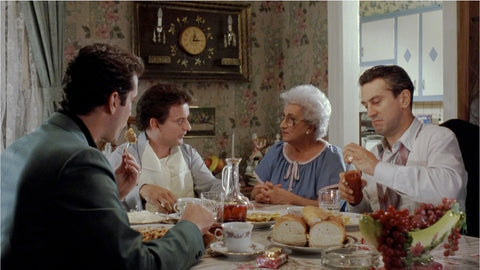This is a story of romance – a very geeky, bicycle-y sort of romance - hero worship, teenage lust, mid-life crisis and possibly the most Italian object ever made. Above all, it is about the triumph of beauty over practicality.

1987. I was fourteen, impressionable, and discovering the freedom that a bicycle could bring a young lad, escaping into the Wicklow mountains for hours at a time. And I had a hero.

Stephen Roche. Only the second man after the great Eddy Merckx to win the Giro d’Italia, Tour de France and World Championships in the same year. Roche was charming, fragile, talented, and all Ireland was in his thrall. And I knew his secret weapon.

Campagnolo. The finest cycling components on earth. Impossibly expensive, gloriously light, every single component a design labour of love. Legends abounded that even the internal surfaces were perfectly polished, even though no-one would ever see them.

A Campagnolo groupset was as desirable – and unattainable – to a teenage boy as Sophia Loren herself. And there was one item above all that every self-respecting young cyclist wanted more than any other.

Delta brakes. To this day, there has been nothing else like them. In 1987 they looked like they had been beamed down from Mars. It’s hard for me to explain to those of you who are not lifelong bike geeks the effect these have on riders of a certain age, but suffice to say…

The Delta brake was a visual triumph, as gloriously, brilliantly evocative of 1980’s Italian product design as a Ferrari Testarossa. A marvel of proportion and beauty, polished to the finest lustre. However, the average cycle brake is made of around 30 parts.

The Delta had 76 separate parts. It is the swiss watch of the cycling world, and mechanics the world over still suffer nightmares at the thought of servicing them. But there was one fundamental problem with the Delta brake.

They just didn’t work. The first edition was withdrawn as it could suffer from slipped cables, leaving the rider with no brakes at all (in a gloriously Italian touch, riders were offered a Cobalto brake instead, which was decorated with an actual blue jewel for no practical purpose whatsoever).

In addition, they were difficult to set up, impossible to adjust when on the road, scary in the wet and weighed nearly half a kilogram. They needed a special tool to maintain them that you couldn’t actually buy anywhere. And if they were still being made today they would cost £500 a pair.

Campagnolo stopped making Deltas in 1993. The company was in decline, fading in the face of lighter, cheaper, more technically advanced products from Japan. Another nail in the coffin of cycling’s golden age, as technology trumped romance. 1993 saw Lance Armstrong win his first Tour de France stage - on Shimano components.

So, by just about any practical measures, the Delta was a failure. But life is not wholly practical. The greatest Italian design is not wholly practical. And sometimes, like many a romance, those that are the least reliable are the most desirable.

And so it proved with the Delta. For me, they sit in a long and distinguished line of spectacular, gloriously Italian design. Products with heart and soul. Products that aim for the stars. Products that aren’t afraid to fail.

If practicality was no concern, which would you rather have, a modern, ultra reliable car, or an Alfa Romeo Disco Volante? Which will rule, the heart or the head?

Why does coffee taste better – no – why does coffee feel better from a classic Gaggia coffee machine? (Just don’t dare ask for a cappuccino after midday).

Italian culture centres around the family. Even today, many of its medium-to-large sized manufacturers remain family run concerns. Campagnolo is no different, family run for over 80 years. Families have a heart.

Italian design still prizes beauty in all its forms, allied to a ‘made in Italy’ mindset. From fashion to manufacturing, family-run businesses take generations of skill and craftsmanship and apply them to the creation of products with signature Italian style.

Campagnolo still make insanely expensive, hard to maintain components that need a whole new set of – yes – insanely expensive, hard to find tools. Why? Because they are passionate about making the very best, most beautiful products they can, and to hell with practicality.
Campagnolo once dominated the high-end cycling component scene. Their market share has dwindled to an all-time low. By any usual business standards, this is failure. But the heart is not led by numbers, and beauty creates its own rules.

Thirty years on, you can still buy a set of Delta brakes, if you are prepared to search a little, and to let your heart rule your head. Sometimes it’s better just not to think about it. Technology dates, but beauty is timeless.














